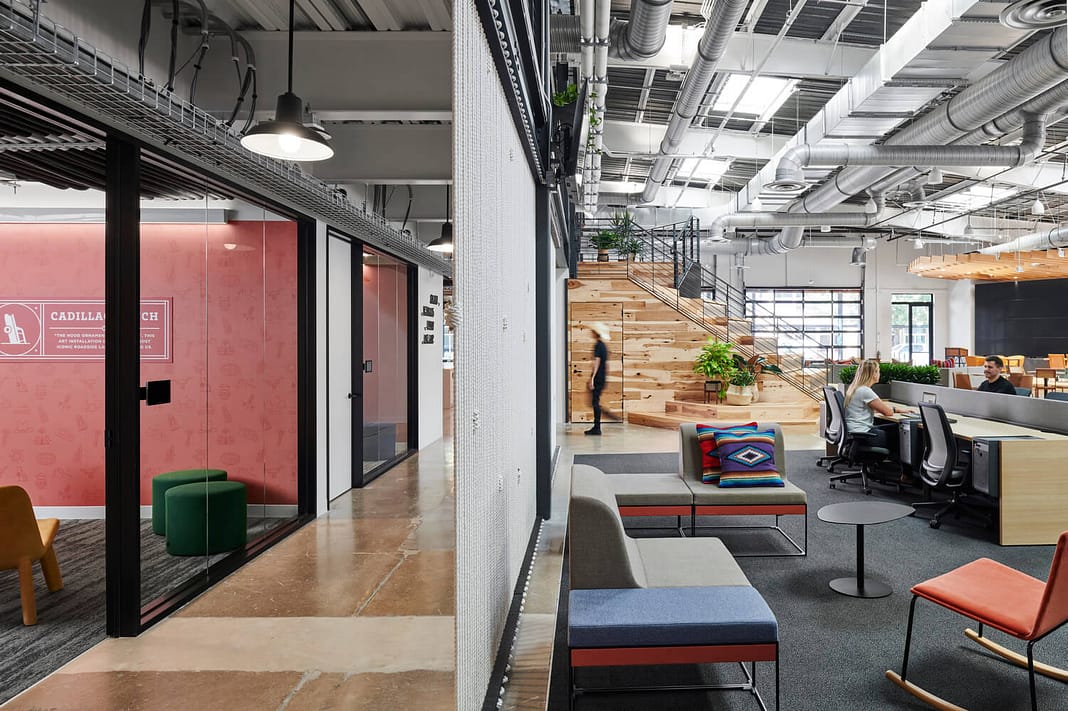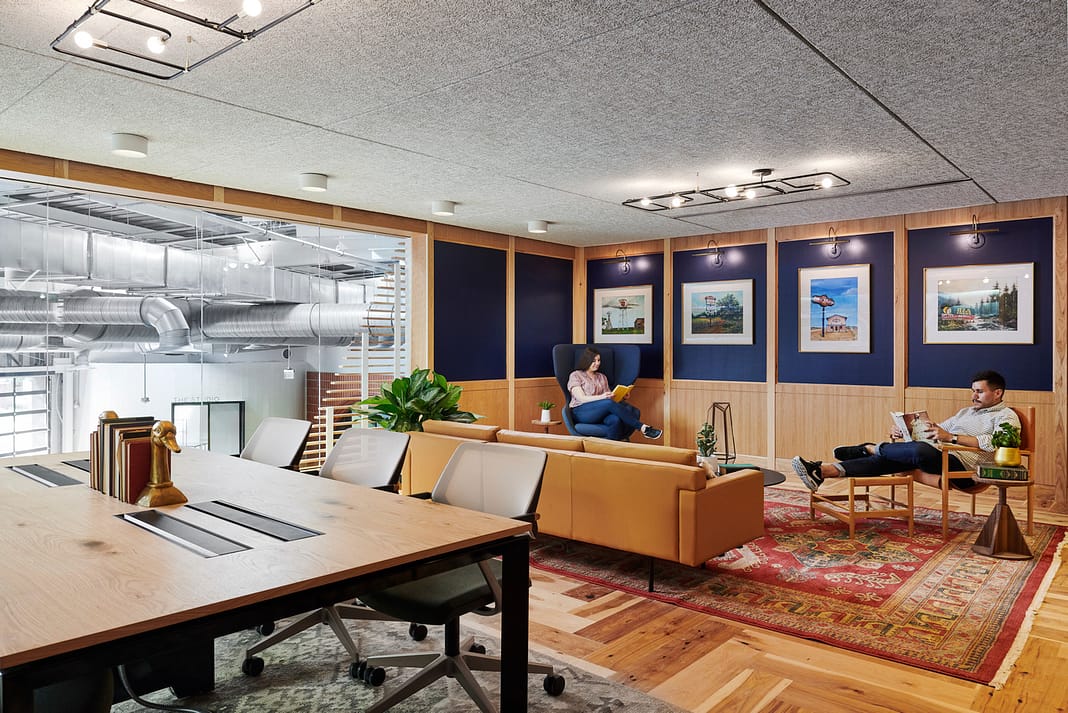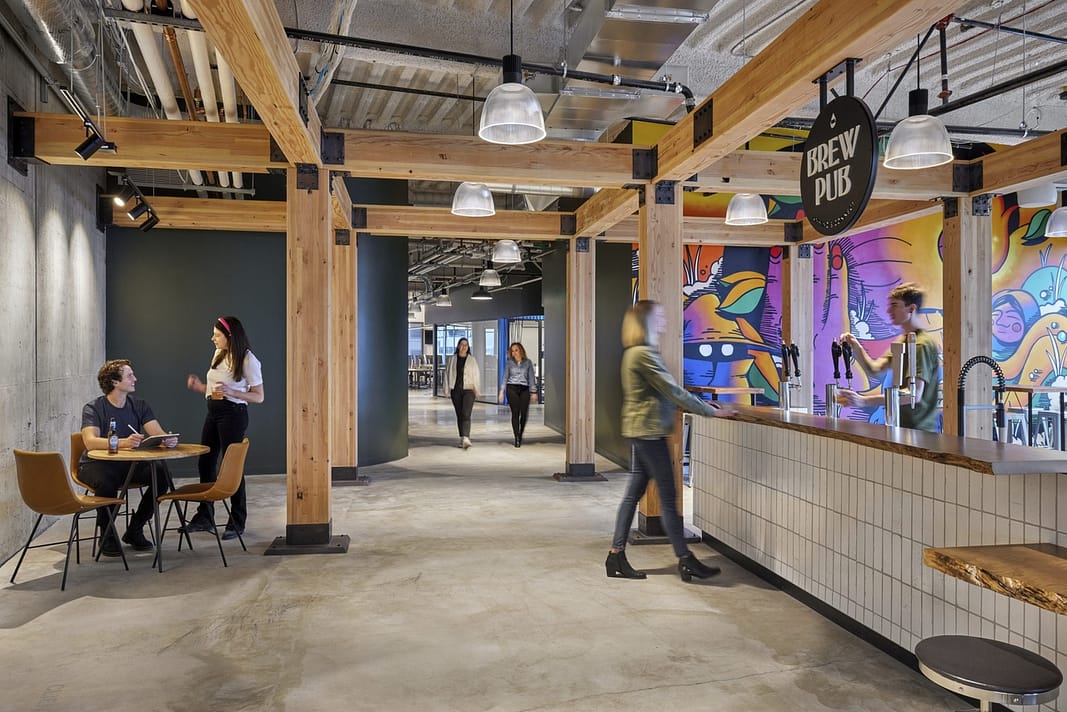By Laura Leung, WELL AP | INTERMEDIATE DESIGNER
It is difficult to predict the exact future of work for Gen Z professionals or how the workplace they inhabit will look, but one thing is certain, they place a high value on intentionality and authenticity—and, significantly, Gen Z will make up a third of the workforce by the end of the decade. Going forward, when considering the workplace for them, intentionality and authenticity will be critical factors that decision makers and workplace designers need to keep top of mind.
Furthermore, the pandemic has underlined the importance of human connection and belonging so essential to authentic social interactions and vital to Gen Z. Connecting and being together socially has taken on a new importance post-pandemic, a point aptly illustrated by the demand for restaurant reservations that are increasingly harder to come by across major cities, while office buildings report reduced occupancy. Understanding and empathizing with Gen Z behaviors and values will be key to creating a resilient workplace.
Breaking it Down
Intentionality refers to the deliberate and purposeful design of a space towards a specific goal or objective. Authenticity refers to the creation of spaces that are true to the values, beliefs, and culture of the people who use them.
When intentionality is understood and translated through the design process, it sets the stage for authenticity to easily be perceived and felt by users. Intentionality broadly considers an organization’s goals and intent while promoting its culture. For instance, many companies that now embrace a hybrid model intentionally support a technology-forward space with high-functioning video conferencing. They seek the latest innovations to enable an equitable environment for collaboration between remote and in-office staff that benefits employees and emphasizes authentic communication.
Authentic spaces help foster a sense of belonging which leads to meaningful connections, communication, self-expression, individuality, trust, acceptance, and respect for vulnerability. Humans have long been hard wired for belonging since the time of the hunter-gatherers. When people contribute to a community they trust, the bonds of connection are strengthened as actions are shared and information exchanged, creating a feedback loop that inspires creativity and innovation. Workplace designs that optimize this interaction play an important role in sustaining young professionals’ careers, as well as combatting quiet quitting, an issue more than half of the US workforce is currently facing according to Gallup.
When the two concepts of intentionality and authenticity are applied to workplace design, the result is an environment that encourages meaningful collaboration, comradery, and the organization’s key values, as well as the unique identities of its employees. The intentional workplace considers all aspects of the design from layout to lighting to acoustics to ergonomics, ensuring an enjoyable, memorable, and healthy environment tuned to user needs and requirements. Intentionality and authenticity are catalysts for each other at the heart of an organization.
Key Community Components
The workplace now more than ever has the potential to define what community looks like. Key components of an authentic community include:
Shared values and goals: Employees need to have a clear understanding of the organization’s values and goals, as well as their role in achieving them. This helps forge a sense of shared purpose and direction essential for a vital community. Environmental accountability and DE&I are high on the Gen Z list of priorities and need to be strongly acknowledged in the workplace. Through graphics and art installations, environmental design is one expertise that can help create awareness of community ideals, objectives, and commitments.
Social and recreational activities: We know that opportunity for social interaction and recreation builds bonds and fosters a sense of belonging among employees. We design for that now, but when designing through the lens of Gen Z, encouraging social exchange becomes even more important. With remote work continuing, in-person occasions will need to be more impactful, drawing on new technologies and creative innovations. Amenity spaces for the workplace will have to deliver an experience impossible to achieve while working remotely, demanding that designers think unconventionally and have fun as they meet that challenge.
Diverse work environments: An in-depth understanding of the work environment that supports the range of distinct user and company work styles effectively encourages employees to interact and collaborate together in new ways, as well as to concentrate. The definition of flexibility has evolved and today plays to individual autonomy and teams to accommodate differing expectations.
Communication: Effective communication between employees and between employees and management is critical for building community, trust, and a sense of being valued. Comfortable, hospitable, welcoming environments with an array of flexible seating options and lounges encourage communication as well as professional and social interaction.
Employee recognition and appreciation: Recognizing and appreciating employees for their contributions builds morale and fosters a sense of belonging. Taking the time to appreciate and reward team members increases their desire to more frequently return to a non-mandated workplace.
Support and mentorship: Providing support and mentorship, something many companies are already doing, helps employees feel valued and connected to the organization. This is especially important for Gen Zers who want more in-person visibility and access to leadership for growth and learning.
New traditions: Empowering staff to create their own traditions and implement ideas for community building helps establish authentic bonds. Events could include work-related and extracurricular internal competitions, award ceremonies, community outreach, and more.
Looking Forward
Wellbeing and work/life harmony are key concepts for all employees. In the economies of creativity, innovation, and knowledge work, self-actualization is often cited as a driver of success. These economies depend on the human mind to generate ideas, and it is our best self that brings forth ground-breaking ideas and significant innovations. To that end, prioritizing for health and wellness is essential and an opportunity for companies and designers to be innovative in ways that have not been seen before.
The future of the workplace has always been dependent on its ability to adapt to the changing needs of the people and economies it serves. With an understanding of GenZ’s priorities as the guiding principles of today’s emerging workforce, the work environment has the potential to further advance its evolution begun over a century ago towards a professional but more human-centric experience. Ideally, it will provide the opportunity to do one’s best work and connect with others in an environment designed with intentionality and authenticity where dreams and careers are made.
Laura Leung, WELL AP | Designer
From Asia to the Americas, Laura Leung has taken on a range of complex projects across multiple sectors including high-tech workplace, retail, higher education and hospitality. As a designer, she is driven by curiosity and empathy and is responsible for the development of impactful design solutions. She was recognized by Interior Design Magazine as a member of their 30 under 30 Class of 2022 and will serve as a juror for Best of NeoCon 2023. Leung sits in IA’s New York studio.






